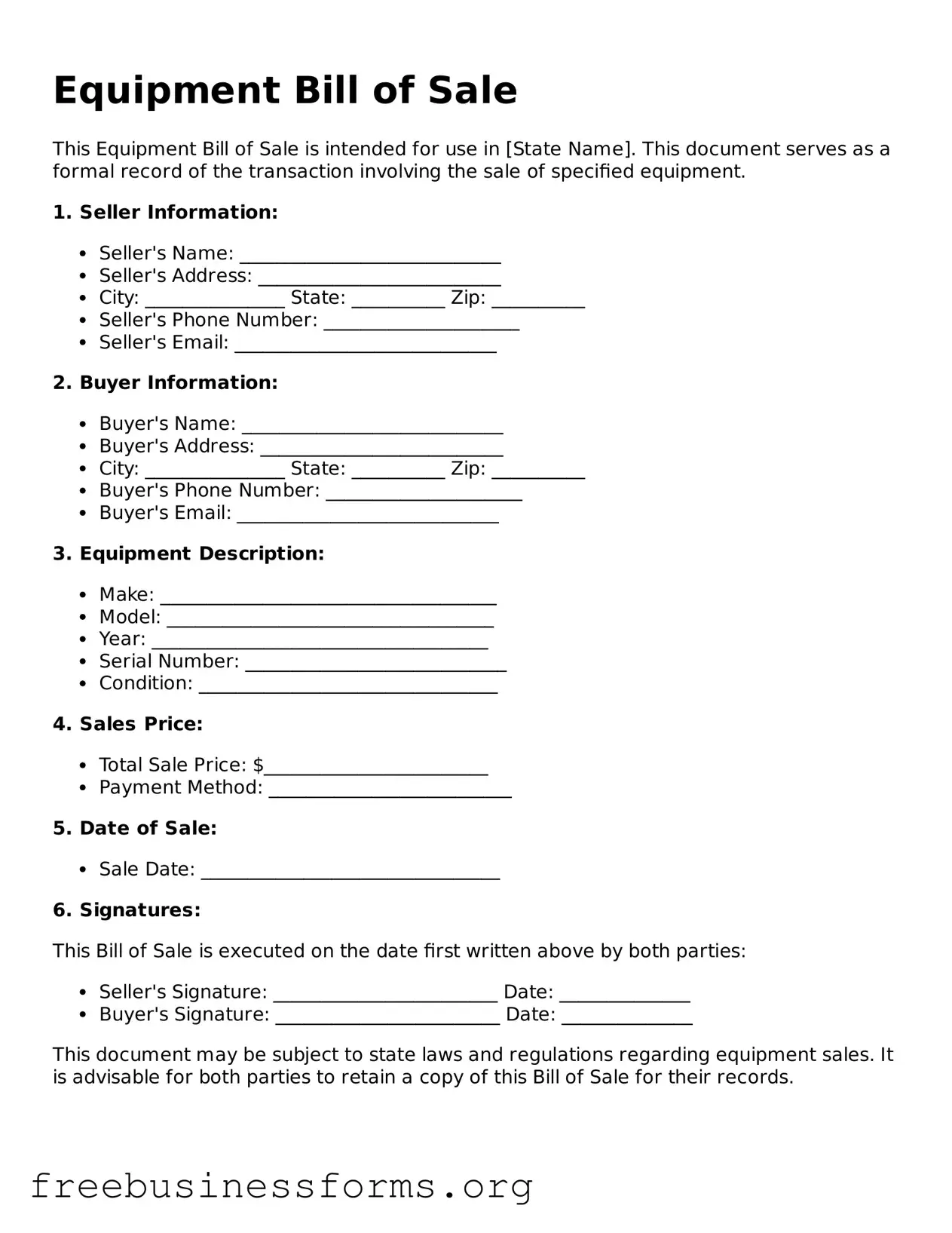Official Equipment Bill of Sale Form
An Equipment Bill of Sale form is a legal document that facilitates the transfer of ownership of equipment from one party to another. This form outlines essential details such as the description of the equipment, the sale price, and the terms of the sale. By using this document, both the buyer and seller can ensure a clear understanding of the transaction, helping to protect their interests.
Open Form Here
